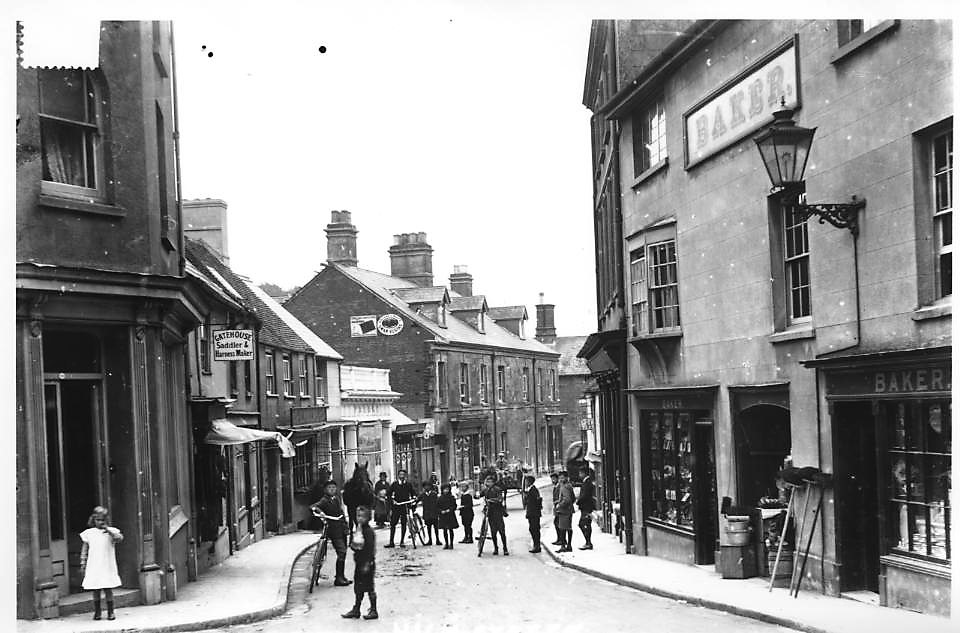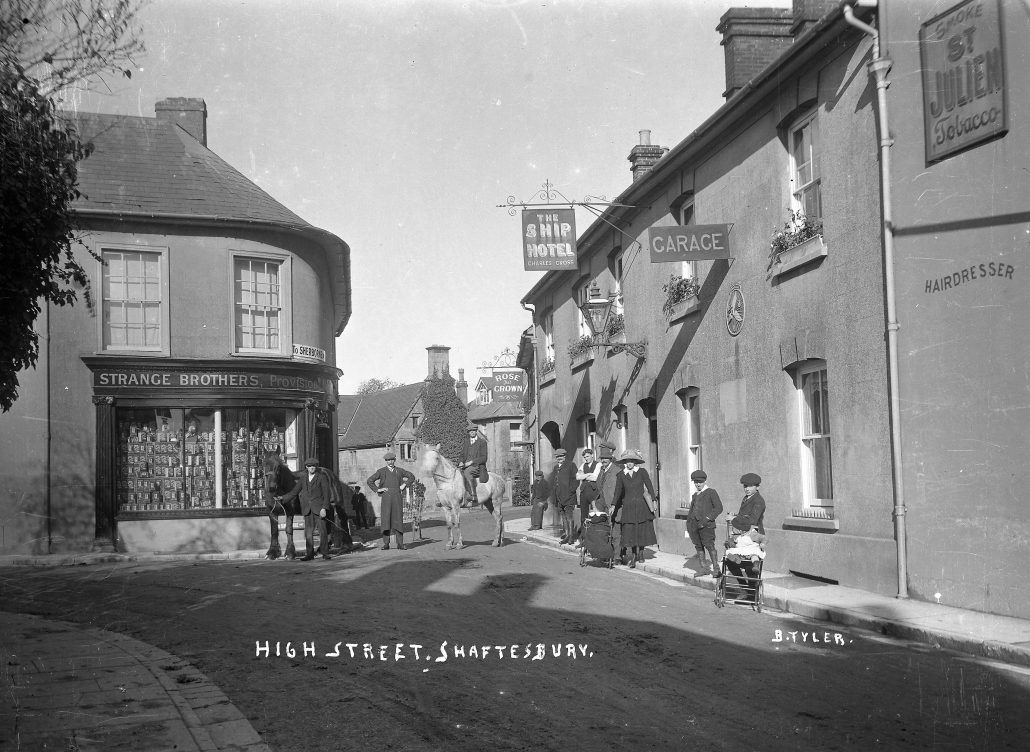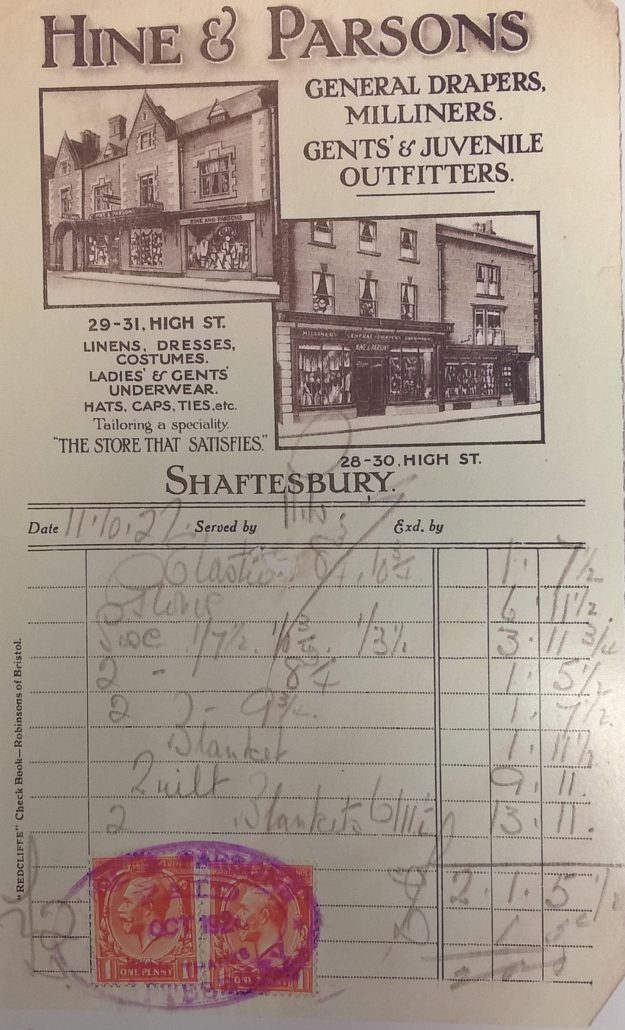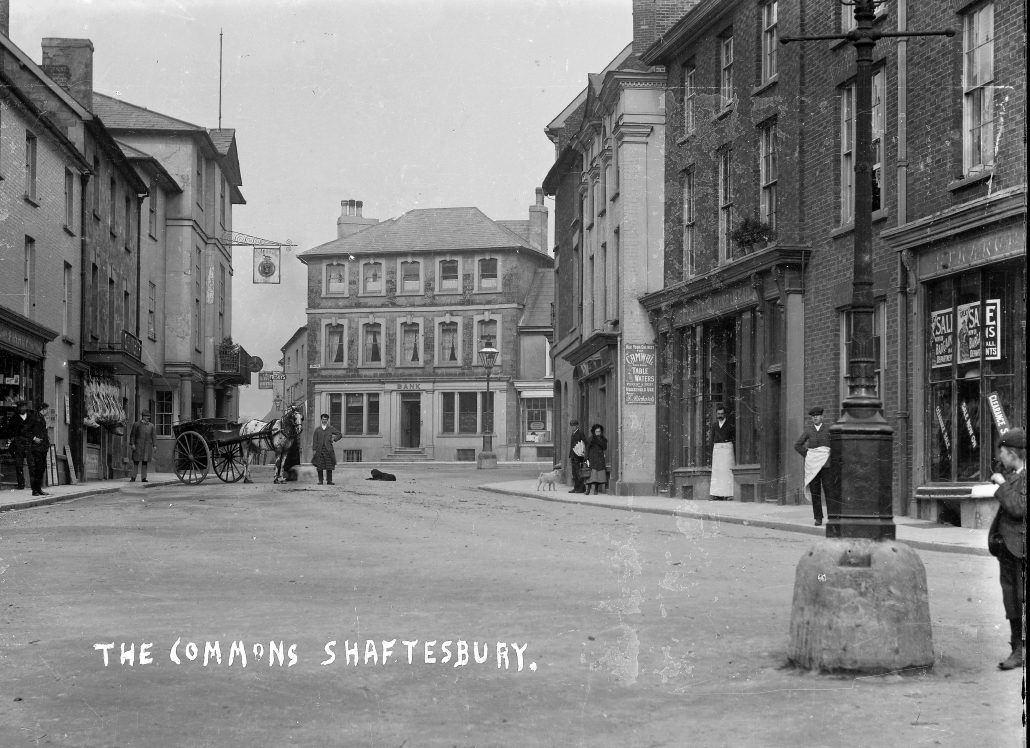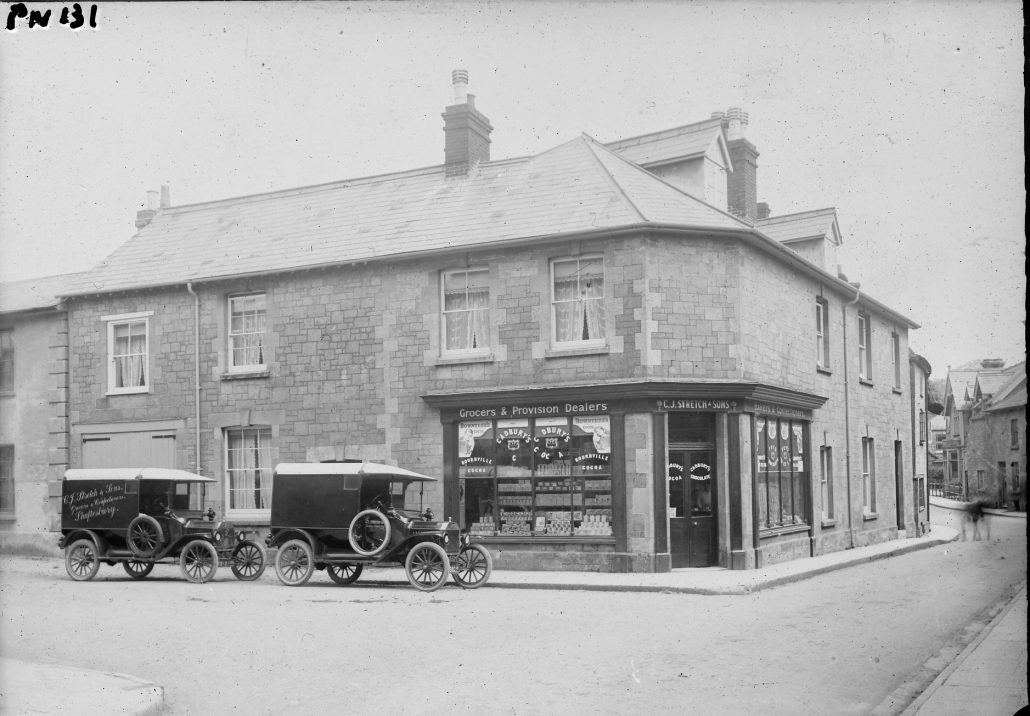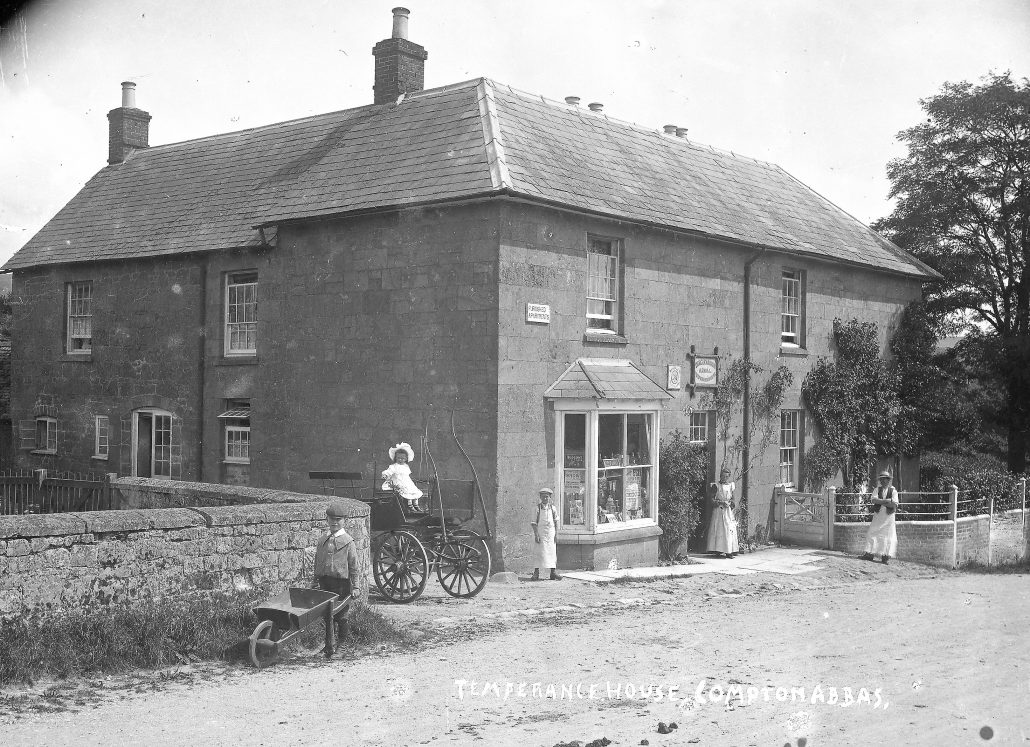Commerce and Shopping
Shops and Businesses in Shaftesbury
At the beginning of the 20th century, Shaftesbury was a busy commercial centre for the local area, offering a wide range of shops and services to townspeople and those living in the villages and on farms.
In 1911 the Post Office was in the Commons, offering a comprehensive postal service and ‘Telephonic Express Delivery’, including collections and deliveries on Sundays. There were also two sub-post offices in St James and Enmore Green.
An omnibus ran regularly from the Grosvenor Hotel to Semley Station, meeting almost every train. There were nine carriers for goods to and from the station, most of them operating only on Saturday, market day.
In 1911 Kelly’s Directory lists ten public houses, catering for the crowds on market day, and for travellers and locals in the town.
Many shops were also manufacturing businesses, such as bootmakers (6), bakers (5), carriage builders (3), a sadler (1), watch and clockmakers (2), and artificial teeth makers (2). There were two chimney sweeps in Shaftesbury, one of whom was a woman.
There were a few large scale businesses, such as Stratton, Sons and Mead, who were wholesale grocers and provision merchants and also owned the Mineral Water Works on Barton Hill; Shorts coach and carriage builders on Angel Square; Shaftesbury Gas and Coke Company in Bimport; and G.E. Johnsons, who were cabinet and furniture makers, undertakers and removal men.
The 1915 and 1920 Kelly’s Directories show little change in the number and types of business. The main difference is the adaptation of coach and carriage establishments to cater for an increasing number of motor cars and bikes.
F.C Long writing about Shaftesbury in the early 1910’s, records that Stratton Sons and Mead was a very fine business, employing upwards of twenty men and boys. Heavy horses were used for delivering goods, and the business kept eight carthorses, a cob and two ponies. Groceries were collected from and delivered to destinations as far away as Bruton. They were loaded at 8 pm and the carts set off at 6 am the following morning, returning by 8 pm in the evening for the next loading.
All goods were weighed and bagged or wrapped. Salt came in bars which had to be chopped and wrapped. Sugar arrived in 2 cwt sacks, tea in 1 cwt boxes and spices and pepper in 1 cwt barrels, all needing weighing and packaging. Eggs were delivered in cases of 30 dozen, and several hundred cheeses in the store had to be turned daily. Harold Viney was the manager, and one of the three members of The Syndicate which bought the town in 1919.

